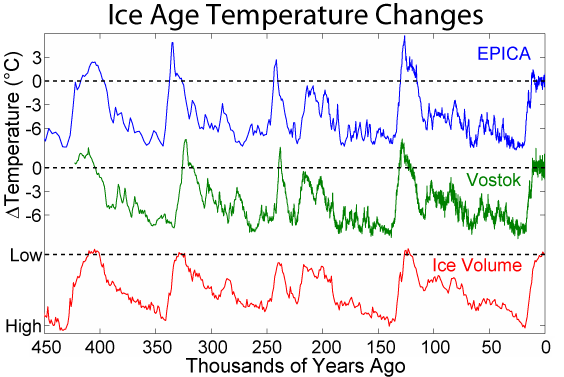Global Paleogeography
Historical Look at Ice Cover Changes
As the average global temperature gets colder, the ice sheets cover more of the planet. These periods are scientifically termed glaciations. Glaciations have repeatedly occurred in Earth’s history. It requires only a temperature change of 5-10˚C to advance the world into a full ice age.

The top two lines show information recovered from ice cores collected from Antarctica.
The blue line represents EPICA which stands for the European Project for Ice Coring in Antarctica.
The green line is data from the Russian Antarctic research station called Vostok.
The red line is data about global ice volume derived from sediment cores.
Notice the similarities between all three lines. Ice volume—or, in other words, ice cover—is low when temperatures are high. Ice volume is high when temperatures are low.

